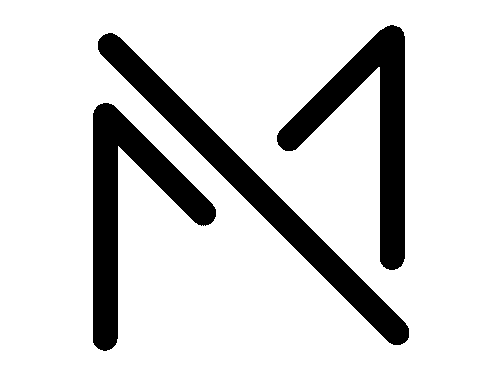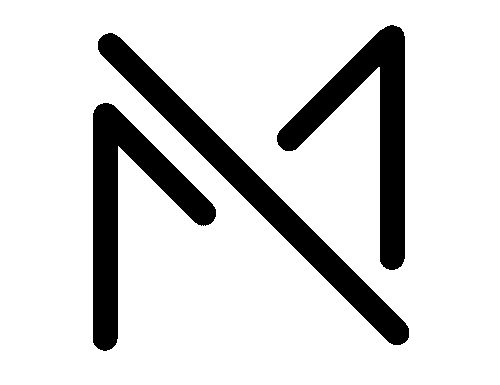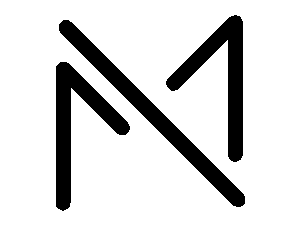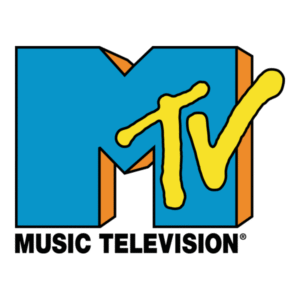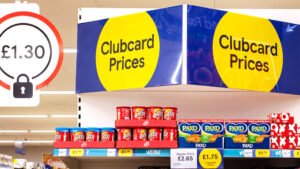Starting a business is exciting, but the marketing side can feel overwhelming. Let’s break it down into the two biggest questions beginners ask:

1. Do I Need a Website First, or Should I Start With Social Media?
Website First (Good if you…):
- Want to look credible from day one (especially in the US, UK, and Europe where customers check legitimacy online).
- Need a central hub to direct customers from ads, emails, or social posts.
- Sell products/services directly (e.g., e-commerce, bookings).
- Plan to run Google Ads or SEO campaigns (you’ll need a landing page).
Think of your website as your “digital home.” Even a simple one-pager with your brand, contact info, and a lead form can be enough to start.
Social Media First (Good if you…):
- Don’t have the budget to build a website yet.
- Want to validate demand quickly before investing in a full site.
- Sell products that thrive visually (fashion, food, fitness, lifestyle).
- Are comfortable engaging with followers, answering DMs, and using built-in shop features (like Instagram Shops or TikTok Shop in the US/UK).
Your social account can act as your “pop-up store.” It’s free, fast, and connects directly to customers.
Best Approach for Most New Businesses:
- Start small on both. Launch a basic website (with a template from Wix, Squarespace, or Shopify) and pick one main social media platform where your audience spends the most time.
- Use social to drive traffic → to your website → to capture leads or sales.
2. Should I Hire an Agency, a Freelancer, or Try DIY?

Hire an Agency If…
- You have a budget and need multiple services (ads, SEO, branding, content).
- You want a team that scales with you.
- You value a “done-for-you” approach with less involvement on your end.
Downside: More expensive (often $2K–$10K/month) and less personal for very early-stage businesses.
Hire a Freelancer If…
- You need help with one area (like social media management, ad setup, or content writing).
- You want more flexibility and affordability than an agency.
- You’re okay with managing the strategy yourself but outsourcing execution.
Typical cost: £300–£1,500/month per freelancer depending on skill.
DIY (Do-It-Yourself) If…
- You’re just starting and have a tight budget.
- You want to learn the ropes before investing big.
- You’re motivated to test things yourself (using tools like Canva, Marketers Quest, Buffer, Mailchimp).
Downside: Steeper learning curve, more trial-and-error, slower growth.
Hybrid Approach (Recommended)

- Start DIY + hire a freelancer for the parts you’re weakest at (e.g., design or ads).
- Once revenue grows, graduate to an agency to scale.
Bottom Line for New Business Owners
- Have a simple website + one key social media account → cover both credibility and discoverability.
- Start lean: DIY what you can, outsource selectively.
- Upgrade to agency support only when you’re ready to scale and have consistent revenue.
Case Studies: Website vs. Social Media First
A. Gymshark: From Garage Startup to Global Fitness Empire

1. Origins
- Founded: 2012 by Ben Francis (then 19 years old) and a group of school friends in Birmingham, UK.
- Starting point: Francis was sewing gym clothes in his garage and using a simple Shopify store to sell them.
- Initial model: Screen-printed fitness apparel, with limited scale but strong appeal to the bodybuilding community.
2. Marketing Breakthrough: Influencer Marketing Before It Was Cool
- Gymshark didn’t spend heavily on traditional ads. Instead, they sent free apparel to rising fitness YouTubers and Instagram creators (many of whom had loyal niche audiences but weren’t yet huge).
- This strategy aligned perfectly with the rise of “fitspo” content and fitness vlogging on YouTube (circa 2012–2014).
- By tapping into authentic, relatable influencers, Gymshark gained credibility and grassroots traction.
Key Move: Leveraged micro-influencers in an era when most brands ignored them.
3. The Turning Point — BodyPower Expo 2013
- Gymshark had its breakthrough at the BodyPower Expo (UK fitness trade show).
- Their booth drew massive crowds, largely because influencers who wore Gymshark online showed up in person.
- Sales spiked, and Gymshark went from a “garage project” to a serious e-commerce challenger.
4. Digital-First, Social-First Strategy
- Unlike legacy brands (Nike, Adidas), Gymshark didn’t bother with retail stores initially.
- Focused on Instagram & YouTube as the primary drivers of brand awareness.
- Content strategy: lifestyle imagery, workout tutorials, and motivational fitness journeys — not just product shots.
- They built a community-first brand, where customers felt part of the movement, not just buyers.
5. Scaling Up
- 2015–2018: Gymshark shifted from print-screened tees to high-quality, form-fitting performance wear.
- Expanded into the US and Europe by focusing on e-commerce and localized influencer partnerships.
- By 2020, Gymshark was valued at £1 billion after receiving investment from General Atlantic.
6. Challenges & Controversies
- Scaling influencer partnerships sometimes led to criticism (e.g., accusations of body exclusivity).
- Heavy reliance on social algorithms meant volatility when platforms changed reach/engagement rules.
- They faced growing competition from brands copying their influencer-first model.
7. Key Lessons for Startups
- Community First, Product Second: Gymshark didn’t just sell clothes — they sold belonging.
- Social Media as the Storefront: In the early years, Instagram was their store window.
- Influencer Marketing at Scale: Micro-influencers can be more powerful (and cheaper) than celebrity endorsements.
- Event Marketing Still Matters: Their BodyPower expo presence transformed online buzz into real-world credibility.
- Global from Day One: E-commerce allowed them to build a worldwide audience without physical retail.
Gymshark shows us that if your product is visually striking and community-driven, starting with social media can be the fastest path to explosive growth. They didn’t need a website first — their audience on Instagram was already converted before the store even went live. The lesson? Build momentum where your people already are, then bring them home to your website when the demand is undeniable.
B. Glossier: Turning a Beauty Blog into a Billion-Dollar Brand

1. Origins
- Founded: 2014 by Emily Weiss, former Vogue assistant and creator of the popular blog Into The Gloss (launched in 2010).
- Starting point: Into The Gloss wasn’t just another beauty blog; it was a platform where Weiss interviewed celebrities, makeup artists, and regular women about their routines.
- The blog’s tone was relatable, authentic, and community-driven — readers trusted the recommendations.
The Transition: Weiss spotted the gap between what beauty consumers talked about (simple, effective, authentic products) and what legacy brands were selling (heavy, polished, aspirational). This gap birthed Glossier.
2. Community First, Product Second
- Glossier launched with its community already built through Into The Gloss.
- Instead of telling customers what to buy, Glossier asked them what they wanted:
- Which moisturizer do you wish existed?
- What annoys you about foundation?
- Which moisturizer do you wish existed?
- Early product development heavily relied on reader comments and surveys.
- Customers didn’t just buy Glossier — they felt like co-creators.
3. Digital-First, Social-First Brand
- Glossier skipped traditional advertising and department stores.
- Focused on Instagram and direct-to-consumer e-commerce.
- Visual identity: clean, pastel pink aesthetic + user-generated content.
- Customers proudly posted their “Glossier pink” packages and stickers — effectively becoming unpaid brand ambassadors.
Hashtag Strategy: #GlossierPink and #SkinFirstMakeupSecond became community badges, amplifying organic reach.
4. Key Growth Tactics
- Micro-Influencers > Celebrities: Glossier featured real women, not supermodels. Customers saw themselves reflected in the marketing.
- UGC (User-Generated Content): Most Instagram posts came directly from customer photos, which boosted authenticity.
- Limited, Core Product Line: Unlike competitors with 100+ SKUs, Glossier started with just four products — each solving specific user pain points.
- FOMO & Exclusivity: Product drops often sold out quickly, creating hype cycles.
5. Scaling Up
- By 2019, Glossier hit $1.2 billion valuation with investments from Sequoia and Forerunner Ventures.
- Opened flagship experiential stores in New York and Los Angeles — part retail, part Instagram playground.
- Expanded internationally across the US, UK, and Canada.
6. Challenges & Setbacks
- Pandemic closures hurt retail-heavy strategy.
- Criticisms over inclusivity and workplace culture emerged in 2020, tarnishing brand perception.
- Increased competition from indie D2C beauty brands copying their community-first model.
7. Key Lessons for Startups
- Leverage Content Before Product: Glossier is proof that a strong media presence (blog/social) can evolve into a brand.
- Community-Driven Innovation: Ask your audience what they want, then build it.
- Make Customers the Marketers: UGC and community hashtags created a self-sustaining marketing loop.
- Less is More: A focused product line can scale faster than over-diversification.
- Aesthetic Consistency Matters: From packaging to retail spaces, Glossier’s “millennial pink” branding created instant recognition.
Glossier proves that you don’t need to rush into building a website to win. By creating a content-first approach through Into The Gloss, they cultivated an audience so engaged that when products finally launched, sales were a natural next step. The takeaway? If you can own attention and trust, your website becomes an amplifier — not the starting line.
Combined Conclusion: Gymshark & Glossier
Looking at Gymshark and Glossier side by side makes one thing clear: there isn’t a single “right way” to start in marketing. Gymshark went all-in on social media to create hype before a website ever existed, while Glossier leaned into content and community first, letting the audience practically design the products for them. Both approaches worked because they understood their audience deeply and built trust before trying to sell. The key takeaway? Whether you launch on Instagram, through a blog, or via your website, success comes from choosing the starting point that aligns with your strengths and resonates with your audience’s behavior.










